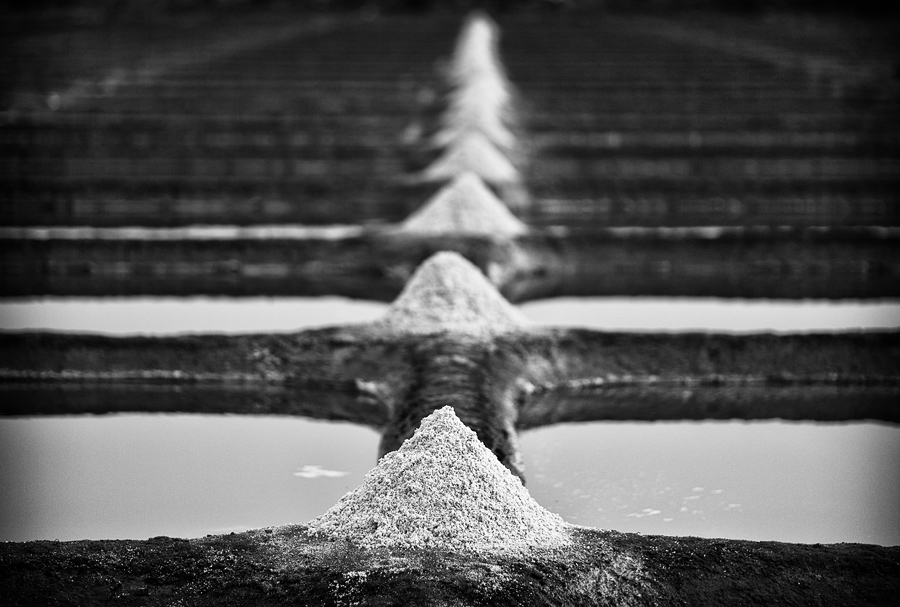Harvesting salt from the land is an ancient practice in Goa, one that predates the Portuguese by centuries. Not long ago, wide open spaces of salt pans graced the Goan countryside. Specific villages and sub-communities – such as the mithgaude (“mith” being the Konkani word for salt) – specialized in the occupation of salt farming.
As is now well known, Goa is being rapidly third-worldized. With their lands and homes under pressure from the real estate juggernaut, the traditional salters are now on their last legs. This going to seed of Goa‘s salt culture has been documented by Reyna Sequeira of Goa University (I haven’t read her thesis but am aware of her conclusions).
It didn’t have to be this way. The salt harvested in Goa is renowned for its flavour and is a vital condiment in every traditional Goan kitchen. No Goan cook worth her salt will touch the packaged rubbish sold in stores. An American entrepreneur would have marketed Goan salt crystals in an attractive bottle, slapped the “Organic” label on it, and made a lot of money, and maybe saved the tradition in the process.
I recall my young days when farmers in bullock carts laden with salt went door to door during these final days of May before the arrival of the pre-monsoon showers. This coincided with the festival of purumento (“purumetachem fest”), a seasonal open bazaar where folks stocked up on provisions for the coming season.

Salt of Goa's earth
5D, 85L II

Salt pans at Agarvado
5D, 24-105L

Geometry of salt
5D, 24-105L

In Agarvado
5D, 24-105L

Harvesting salt in Batim
5D, 24-105L

Fresh salt for sale by the roadside in Batim
5D, 24-105L





nice snap…but in goa exactly where it is?
WELL DONE. I AM EXCITED TO SEE THE PICTURES…………THEY ARE ALL VERY CLOSE TO MY HEART.
Photographically speaking, “In Avargado” and “Geometry of Salt” are my favorites.
Excellent photography.
Keep up the good work.
You have taken me back to my childhood memories! I can smell the brownish salt and once again long to drink soda water (the one in a glass bottle with marble) mixed with this salt.
I remember as a child reveling in the various flavors of sea salts (I used to eat salt neat).
Here is an American entrepreneur. Maybe he can import from Goa?
http://abclocal.go.com/wabc/story?section=news/local/new_york&id=7962717
[…] more here: Salt of the Earth Posted in General Tags: agarvado, conclusions, konkani, landscape, real-estate, reyna-sequeira, […]